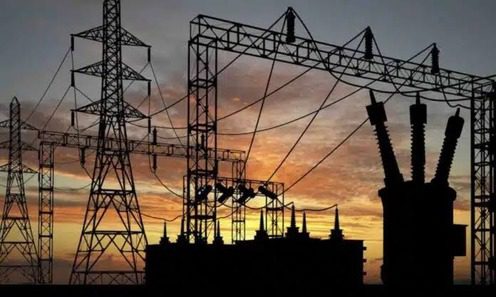The grid collapse on November 7 marked the 10th such incident in Nigeria in 2024, plunging the country into complete darkness.
In Nigeria, grid collapses involve the Generation Companies (GenCos), the Transmission Company of Nigeria (TCN), and the Distribution Companies (DisCos).
What is the National Grid?
The National Grid is a network of power-generating plants, electricity transmission lines, and substations that delivers electricity to every home and business connected to it.
How Does a Grid Collapse Occur?
Imagine Nigeria’s power system as a chain linking power plants (GenCos), transmission networks (TCN), and distribution companies (DisCos), all working together to supply electricity to homes and businesses.
Electricity Generation: Power plants, known as GenCos, create electricity. As of December 2022, there were 23 grid-connected generating plants across Nigeria, including Geregu (owned by Femi Otedola), Shiroro, Pacific Energy Limited (owned by Dr. Deji Adeleke), Egbin Power Limited, North South Power, Transcorp Power, and Kainji/Jebba, among others.
Transmission: The electricity is then sent through high-voltage lines by the TCN, much like water flowing through large pipes.
Distribution: From there, the electricity is passed to DisCos, which deliver it to homes and businesses. Some DisCos include Abuja Electricity Distribution Company, Eko Electricity Distribution Company, and Benin Electricity Distribution Company, among others.
When a “grid collapse” occurs, it means the entire system—this interconnected chain—has suddenly shut down. In Nigeria, issues within the TCN are often a primary factor in these collapses.
As of November 7, 2024, Nigeria has experienced 10 grid collapses since February of this year. Without corrective measures, further collapses may occur.
A grid collapse can be likened to a chain breaking: when one part fails, the entire flow of electricity stops, leaving end-users without power. This is why a grid collapse can plunge the entire country into darkness.
Grid Disturbances
You may have heard the term “grid disturbances.” These occur when system operators reset the grid preemptively to prevent an impending issue that could lead to a catastrophic collapse.
Why Does Grid Collapse Happen?
Imbalance in Electricity Production and Use: Too much or too little electricity generated or consumed at once can cause an imbalance, disrupting the system. In Nigeria, the generated power is often insufficient for a population exceeding 200 million.
Technical Failures: Issues with transmission lines or equipment (such as short circuits or damaged transformers) can disrupt the smooth flow of electricity.
Repair Works: Sometimes, rapid repair activities can trigger a collapse. For instance, the collapse on November 7, 2024, resulted from repair works in the power sector, alongside a sudden frequency increase from 50.33Hz to 51.44Hz, according to TCN spokesperson Ndidi Mbah.
Aging Infrastructure: Many parts of Nigeria’s power infrastructure have been in service for years and may be worn out or inadequately maintained.
In the event of a major fault in generation, transmission, or distribution, the grid system’s self-trip mechanism is triggered, automatically shutting down the system to prevent further damage.


